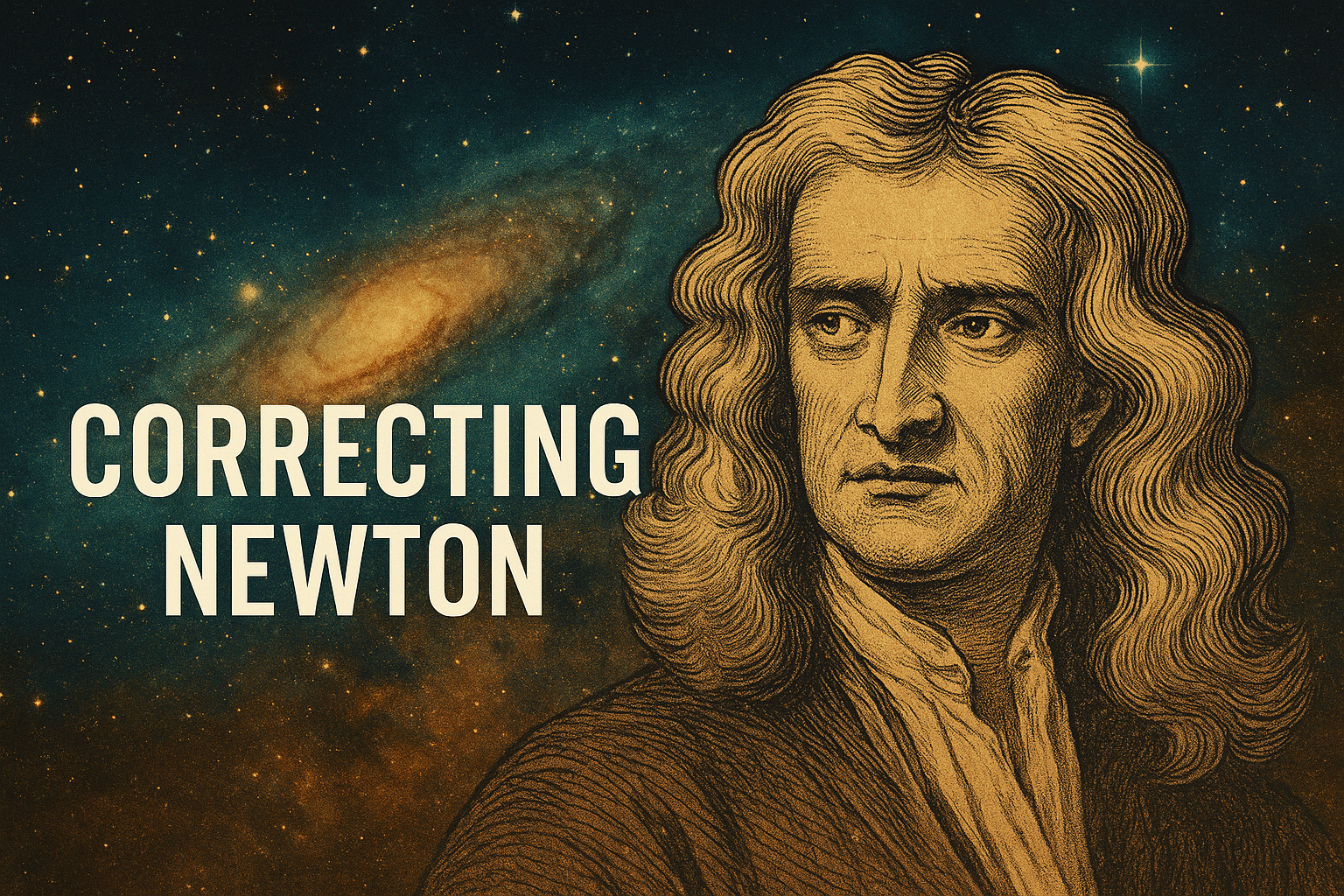Pattern Field Theory’s Challenge to Newtonian Mechanics
Challenging Newton’s Classical Laws

Central Claim of Pattern Field Theory
Pattern Field Theory™ proposes that Newton’s laws of motion apply only within stable, high-coherence pattern regimes. In this model, force, mass, and acceleration are not universal primitives but are emergent products of structured field interactions as experienced by an observer pattern.
In classical Newtonian mechanics:
- Force is an external influence on matter (\( F = ma \)).
- Mass is treated as an intrinsic, invariant property.
- Time is assumed to be absolute and uniform.
PFT reframes these as secondary constructs arising from deeper field coherence and interaction rules.
PFT’s Critique of Newton
Limitations Identified in Classical Mechanics:
- Time is treated as an external, independent axis rather than a relational coordinate.
- Mass is assumed to exist inherently rather than emerging from coherence stability.
- The observer pattern is excluded from the dynamics, despite influencing measurement and coherence anchoring.
PFT Provides Alternative Interpretations:
- Time is a coherence-state coordinate dependent on interaction.
- Mass reflects resistance to phase-shift within a pattern field.
- Force expresses stabilizing tension between interacting pattern systems.
PFT’s Corrective Proposal
PFT redefines force as the manifestation of stabilizing pattern tension:
Where:
- F = emergent force
- Tstabilize = stabilizing tension within the field
- Dpattern = local pattern density
Mass becomes an index of pattern stability — the degree to which a pattern resists reconfiguration due to external interaction.
The Anchoring Operator
The Anchoring Operator formalizes how an observer pattern locks onto or shifts between coherent states in the field.
Operator Form:
Where:
- \lambda = anchoring strength constant
- \Psi = current observer-pattern state
- P = local potential field density
- \langle P | \Psi \rangle = resonance measure between observer-pattern and field potential
Conceptual Gains
- Links classical mechanics with field-driven, coherence-based interpretations.
- Explains deviations from Newtonian laws near high-energy or high-curvature environments.
- Explicitly incorporates the role of the observer-pattern as a domain anchor.
Summary: A Structural Shift
- Newton: Time is absolute; mass is intrinsic; force is external.
- PFT: Time is relational; mass emerges from coherence; force expresses stabilizing tension.
Motion becomes a direct outcome of stable field interactions, rather than an externally applied condition.
Conclusion
Pattern Field Theory™ does not discard Newton. It generalizes him. Classical mechanics becomes a special case of a wider coherence framework. When pattern stability, anchoring, and field tension are understood as foundational, the dynamics of the physical world appear not as imposed, but as self-consistent expressions of structured fields in interaction.